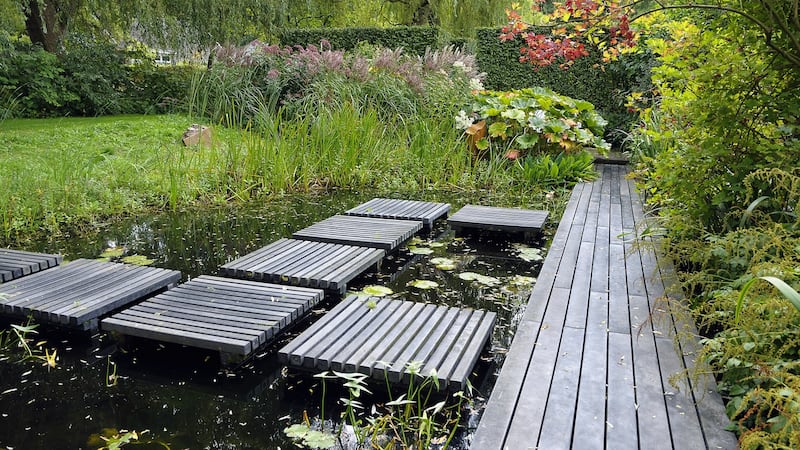If I had to name the one standout quality that all great garden makers have in common, it wouldn’t be their knowledge of plants; their understanding of how to use form, texture, colour and scent; or even their capacity to envision how a planting scheme will look in maturity. Nor would it be their connection to the landscape, their respect for its sense of place or even their ability to create that all-important sense of atmosphere. Instead it would be their willingness to edit, a skill that requires a very particular mixture of vision, flair, bravery, restraint, good humour, humility, faith and patience.
To edit a garden well is to be willing to constantly reappraise it, eyes open to the myriad ways it could be improved. This might be something as simple as deciding to repeat a particularly pleasing plant combination to add rhythm and unity. Or crown-lifting a shrub or tree to give it a more sculptural appearance while allowing sunlight to filter through to the lower storey of planting beneath it. It could be skilfully training a climbing rose to act as a softening counterpoint to the hard architecture of your house, or thinning out self-sown seedlings of promiscuous plants so that they flourish without taking over.
But it’s also about making the big, often uncomfortable decisions that, truth be told, require a good deal of hard work. That could mean, for instance, moving or removing a poorly situated hedge or young tree that is blocking a beautiful view or vista. Or widening a path, or repositioning a gateway, or painting a boundary wall to “disappear” it. Equally, it could be realigning a driveway or avenue to better frame the approach to your home, or reimagining a lawn as a native meadow, or repositioning a patio so that its new location is in a sunnier, more sheltered part of the garden.
[ Reader's gardening question: What fruit and veg can I plant in the coming weeks? ]
Rather than a lucky leap in the dark, this sort of good garden editing is a process informed by constant careful observation, as well as the work of those who’ve gone before us. For example, if you’re thinking of redesigning an ugly flight of garden steps whose awkward dimensions make it uncomfortable to navigate, then it’s useful to bear in mind the golden rule of their proportions as laid down by the legendary American landscape designer Thomas Church, which is that the sum of twice the height of the vertical “riser” plus the depth of the horizontal ‘tread’ should roughly equal 66cm. Or if you’re pondering how to add evergreen interest to your garden, then a good rule of thumb is that it shouldn’t form more than 60-70% per cent of the overall planting, a way of reliably ensuring seasonal interest.
READ MORE
That new patio, raised bed or paved terrace? Ideally it should be positioned so that it relates to the lines of your house, especially the latter’s windows and doors, a rule followed by almost all good garden designers. Its size and proportions? As fanciful as it sounds, an understanding of the golden ratio or golden rectangle (also known as the rule of divine proportion), first laid down by the Greek mathematician Euclid and used since by countless artists and designers, is guaranteed to make it pleasing to the eye.
Take a close look at the work of the brilliant late Dutch designer Mien Ruys, for example, and you’ll see how her own appreciation of geometry along with her highly disciplined use of colour and hard landscaping materials, all of which she learned through a lifelong process of trial and error, gave her gardens such enduring appeal. Read the brilliant writing of another trailblazing female designer, the late Sylvia Crowe, and you’ll notice how the same respect for the core principles of good garden design include an understanding of the roles of geometry, symmetry, balance, contrast, harmony, pattern, rhythm and repetition.

One of Crowe’s colleagues was a young John Brookes, another famous British garden designer whose work as well as his writings on the subject have also left an enduring legacy. His famous grid system, where the lines of a building are echoed in its garden to create a visually satisfying, well-proportioned design, is still used to this day. In turn, one of Brooke’s students was the late Irish gardener and landscape architect Angela Jupe, who bequeathed her own artfully made garden, Bellefield in Co Offaly, to the RHSI. The garden, now cared for by head gardener Paul Smyth with the help of volunteers, society members and assistant gardeners, is a living testimony to Jupe’s readiness as a gardener to forever edit and refine her work, as well as to those who followed in her footsteps.
The same is true of another of Ireland’s greatest garden makers, Helen Dillon, whose own writings on the subject are classics. Interviewing her a decade ago for a feature I was writing on her Ranelagh garden, Dillon showed me two beautifully bound journals filled with her neatly handwritten records of almost every plant she had ever grown. They included dates, detailed descriptions and sources as well as, in some cases, the plants’ eventual demise. “I’ve killed quite a few,” she cheerfully admitted. A self-confessed plantaholic, her many years of brilliant gardening had taught her the importance of discipline, something she said was all the more important given our easy online access to all kinds of botanical rarities. “Now that you can have any plant you want, what do you really want?” she wondered. “That’s what all gardeners have to ask themselves. And that, I think, is a good thing, because so much of making a really great garden is about that all-important editing process.”
This week in the garden
Tomato plants grown under cover make rapid growth at this time of year and need a careful regime of watering and feeding to keep them properly productive. Cordon-types in particular can easily get out of hand and should be carefully supported with twine and regularly side-shooted to encourage the plants to concentrate on fruit production.
Watch out for signs of potato blight in the kitchen garden or allotment and act quickly if you spot signs of the disease, which include blotching and pale brown halo marks and lesions on the foliage as well as dieback. With infected crops, cut the caulms right down to ground level, bag them and bin them.
Dates for your diary
Saturday July 27th-Saturday August 4th: Carlow Garden Festival 2024, with a host of talks, guided tours and workshops by expert speakers from Ireland and the UK including Kitty Scully, Colm O’Driscoll, Anne-Marie Powell, Alan Gray, Arthur Parkinson, Niall McCauley, Matthew Reese, Margaret Gormley, Darach Lupton, Klaus Laitenberger, Bunny Guinness, Tom Stuart-Smith, Matthew Pottage, Fiann O’Nualláin, Paul Smyth, John Little and Patrick Hunt. Booking advisable. carlowgardentrail.com

















